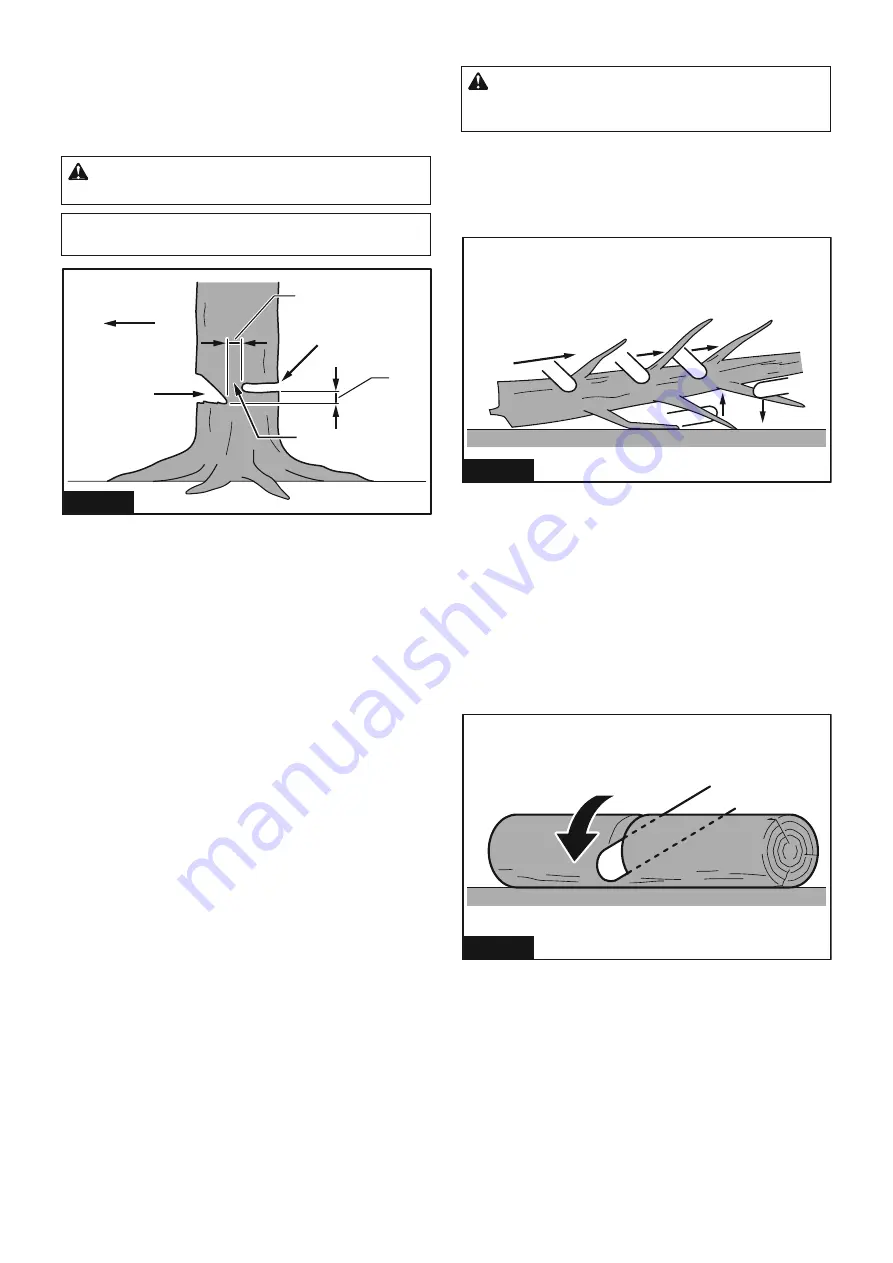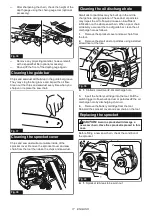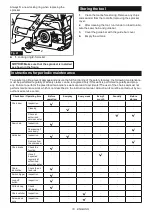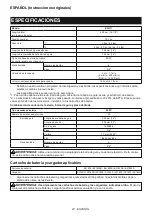
14
ENGLISH
Before felling is started, consider the natural lean of the
tree, the location of larger branches and the wind direc-
WLRQWRMXGJHZKLFKZD\WKHWUHHZLOOIDOO
Remove dirt, stones, loose bark, nails, staples and wire
from the tree.
Notching undercut and felling back cut
CAUTION:
Do not cut the hinge under any
circumstances.
The tree may fall unexpectedly.
NOTICE:
Use plastic or aluminum wedges to
keep the back cut open. Do not use iron wedges.
1
1
2
3
4
5
Fig.24
Ź
1.
PPƎ
2.
Felling back cut
3.
Hinge
4.
Notch
5.
Direction of fall
Make the notch 1/3 the diameter of the tree, perpen-
dicular to the direction of falls as illustrated. Make the
ORZHUKRUL]RQWDOQRWFKLQJFXW¿UVW7KLVZLOOKHOSWRDYRLG
pinching either the saw chain or the guide bar when the
second notch is being made.
0DNHWKHIHOOLQJEDFNFXWDWOHDVWPPƎKLJKHU
WKDQWKHKRUL]RQWDOQRWFKLQJFXWDVLOOXVWUDWHG.HHSWKH
IHOOLQJEDFNFXWSDUDOOHOWRWKHKRUL]RQWDOQRWFKLQJFXW
Make the felling back cut so enough wood is left to act
as a hinge. The hinge wood keeps the tree from twisting
and falling in the wrong direction. Do not cut through
the hinge.
As the felling gets close to the hinge, the tree should
begin to fall. If there is any chance that the tree may
not fall in desired direction or it may rock back and bind
the saw chain, stop cutting before the felling back cut is
complete and use wedges of wood, plastic or aluminium
to open the cut and drop the tree along the desired line
of fall.
When the tree begins to fall, remove the chain saw
from the cut, stop the motor, put the chain saw down,
then use the retreat path planned. Be alert for overhead
limbs falling and watch your footing.
Limbing a tree
CAUTION:
Limbing may only be performed by
trained persons.
$KD]DUGLVSUHVHQWHGE\WKHULVN
of kickback.
Limbing is removing the branches from a fallen tree.
When limbing leave larger lower limbs to support the
ORJRႇWKHJURXQG5HPRYHWKHVPDOOOLPEVLQRQHFXWDV
illustrated. Branches under tension should be cut from
the bottom up to avoid binding the chain saw.
1
Fig.25
Ź
1.
Limb cut
Cross-cutting/bucking a log
Cross-cutting/bucking is cutting a log into lengths. It
LVLPSRUWDQWWRPDNHVXUH\RXUIRRWLQJLV¿UPDQG\RXU
weight is evenly distributed on both feet. When possi-
ble, the log should be raised and supported by the use
of limbs, logs or chocks. Follow the simple directions for
easy cutting.
When the log is supported along its entire length as
illustrated, it is cut from the top (overbuck).
Fig.26















































